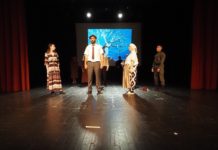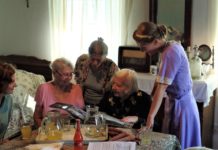Curricular reform will be implemented in all schools next year, in those classes in which this year it has been in the phase of experimental implementation, said Minister of Science and Education, Blaženka Divjak this week, announcing that this week a decision to adopt a curriculum with all curriculum subjects and interdisciplinary topics curriculum would be presented for public consultations.
After years of turmoil and heated debate over the reform, it seems that next year it could take firm root in schools across the country. There are many problems and criticisms that still need to be addressed, which in many respects appear to be aligned with market trends, rather than reflecting on the true purpose of education. But this is not just a question of reform, but our view of education in general.
The emphasis is on “school for life” and “realistically needed”, while “school for humanity” has become a sideshow. This fact does not surprise us, since we live in a market and trend-oriented society, but it is still sad coming from among the ranks of proclaimed leaders of education and educational thought.
Education seems to be completely “castrated” by the market, by an imposed economic dogma that no one wants to question. Science and education have always been the leaders of progress, however nowadays the guiding principle of profit conditions education and science. Thus, even the curricular reform that has certain bright spots, obscures all the “abstract” and “imagined”, all the “enthusiasm”, all that cannot be easily monetised in today’s society, but in various other ways enriches the (evolution) of human being.
From an economically profitable paradigm, education is divided into not useful and useful. This is in line with the status quo because market education is actually a way of accepting the present state of power distribution and the way it is maintained. This is a huge sore point for today’s education, including the curricular reform that has been criticised on completely wrong grounds and from completely different perspectives.
However, we should address at least some positive developments, especially those significant for the Rromani community. In the framework of the whole curricular reform there is a Model C curriculum drafted for the Rromani national minority. This is the first such example in Croatia since so far there has been no minority education for the Rromani which is a huge oversight having in mind the necessity of such education for development and improvement of the Rromani position in our society but even wider social introduction to Rromani culture.
Model C implies Croatian language in schools with additional two to five school hours dedicated to learning (fostering) the language and culture of a national minority. These additional five school hours a week comprise of learning the language and literature of a national minority, geography, history, music and arts.
The program itself states that “the goals of this Curriculum are to build a school culture that respects diversity and strives for interculturalism and inclusiveness, so its implementation will be fully successful only if the Curriculum elements of the subject Language and Culture of the Rroma National Minority are integrated into school curricula in order to experience positive changes in a situation where members of the Rroma national minority are at risk of being excluded within a certain school environment. “
Public consultation on the Curriculum Proposal for Rromani Language and Culture – Model C has recently been completed.
As emphasized, the intercultural approach to the Rroma is of particular significance, because the previous contacts were burdened with adopted stereotypes, insufficient knowledge of Rromani culture and rare encounters. Rromani minority position in Croatia means dispersal throughout the territory of the country, periodic, seasonal migration for doing business, life in small, isolated communities in suburbs or separate settlements, says Neven Hrvatić in his publication Intercultural Curriculum and Education in Minority Languages.
Adequate and well-advised approach to education is important for the integration and protection of national minorities, in order to achieve full and fair coexistence. Education should always lead to the destigmatisation, liberation and spreading horizons in every respect.
Model C of the Curriculum for the Rroma national minority is a small but good step in that direction. However, the great question remains from the beginning of the text, about the lack of general education rethinking, so it is questionable how much progress we can make in such an environment at all.












